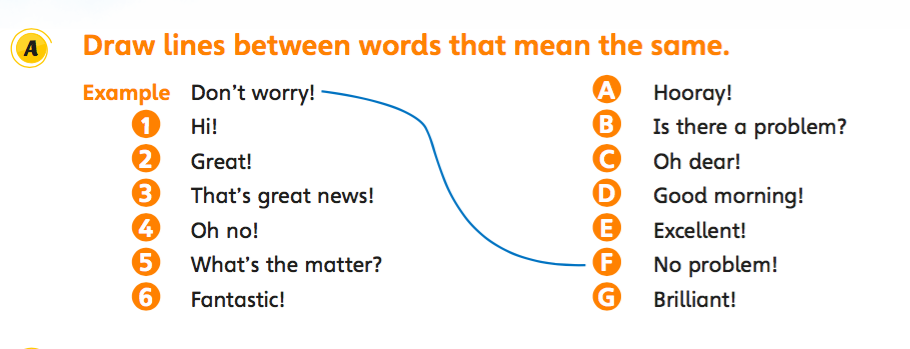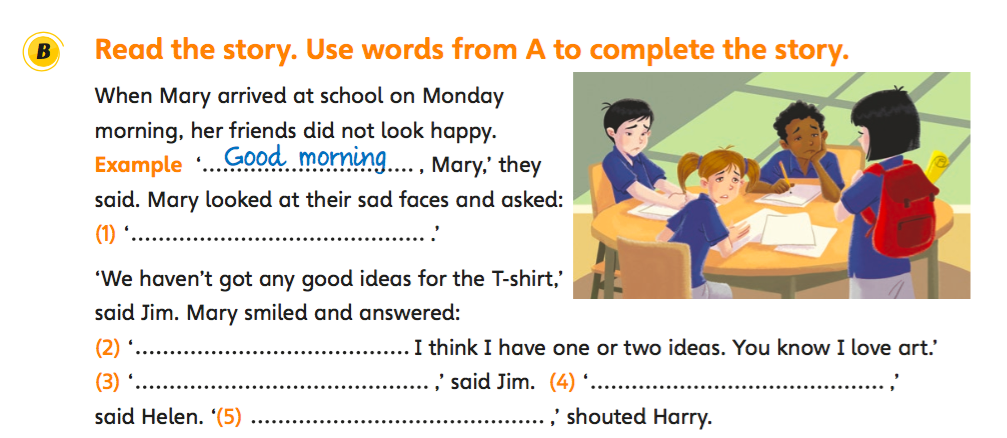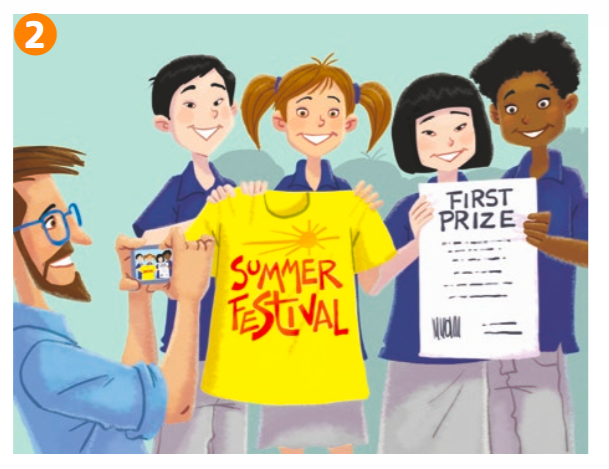Flyers writing booklet – Dialogue in your story
In this post, we’ll be looking at page 11 of the Flyers Writing Skills Booklet – incorporating dialogues into stories. The story on this page is part of the story we saw on the previous page, and in my previous post on punctuation.
Training learners to include things that people say (or are thinking) in stories is an extremely useful useful thing to do.
Sometimes learners might not remember a key word for describing what they see in a picture and get stuck, and this can cause a lot of anxiety. But often, in these situations, they can tell the story by saying or writing what a person is saying or thinking.
In this picture, for example, learners might want to say that the children are worried, uninspired or something similar. I doubt if at A2 level, they would know the word ‘uninspired’!
But they probably could say or write ‘We don’t have any ideas.’ or something similar.
So, we start off with some useful expressions and exclamations.
Learners have to draw lines between expressons with similar meanings.
Key:
1 Hi! D Good morning!
2 Great! E Excellent!
3 That’s great news! A Hooray!
4 Oh no! C Oh dear!
5 What’s the matter? B Is there a problem?
6 Fantastic! G Brilliant!
Next, they use some of the expressions from A to complete the story in B.
Key:
(1) What’s the matter?
(2) Don’t worry!
(3) (4) (5) Great! / Fantastic! / Brilliant! / Hooray! / Excellent! /That’s great news! (any order)
Next, learners use the expressions from A to complete the next part of the story (C).
Key
(1) Hooray!
(2) Brilliant! / Fantastic! / Great! / Excellent!
Extension
To practise punctuation again, I’d use the text in B to get learners to notice all the punctuation.
How many sentences are there? (11)
How many questions are there? (1) What’s at the end of the question? (a question mark (?))
How many exclamation marks (!) are there? (4)
How many capital letters are there? (22 – not including Example) Where are they? (at the start of sentences, names, I (personal pronoun), T in T shirt, M in Monday.)
How many commas are there? (6)






